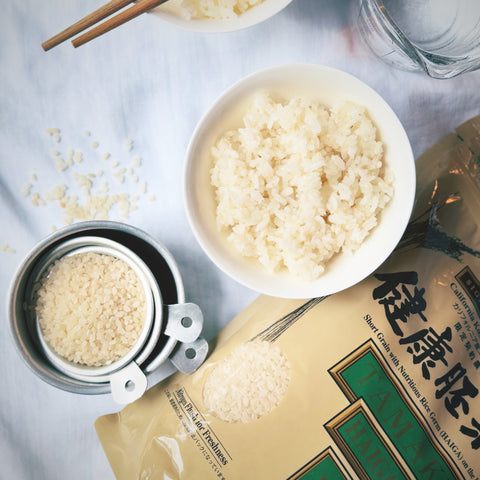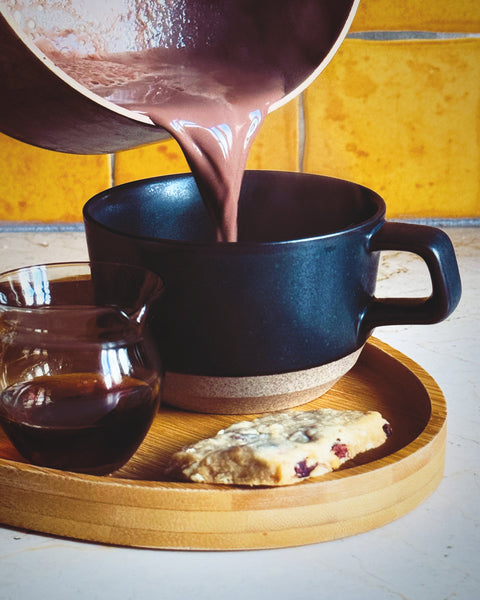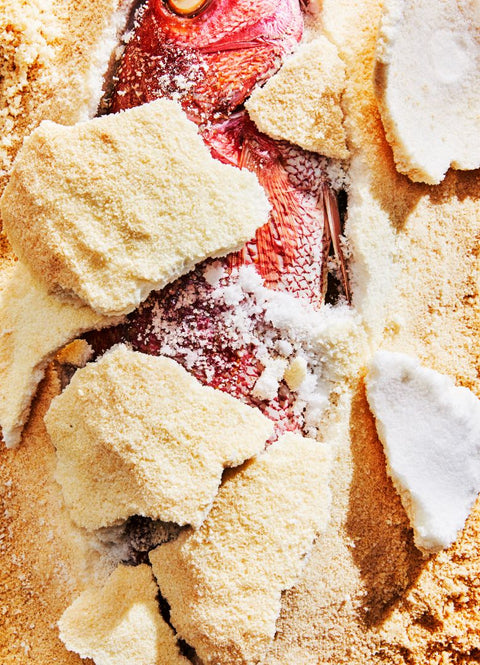Cooking rice is something you either find easy and take entirely for granted, or something you find strangely hard to get consistently right. If you’re in the later camp you may have solved the problem by buying a rice cooker and never looked back, but for those of us who insist on going old-school and just use a pot (or have an aversion to giant single-use gadgets), here is the information you need to know.
Begin by noting the cook time on your package of rice but ignore the quantity of water suggested since this can be bizarrely wide-ranging. Science tells us that rice actually absorbs water at a 1:1 ratio (by volume). And shockingly this appears to be true for ALL types of rice. It’s all the other factors that determine how much “extra” water you need to add to your pot to get perfectly fluffy rice.
Do you wash your rice? Experts mostly say you should, and to do so by putting it in a colander and running it under cold water for about 30 seconds to 1 minute or until water runs clear. Doing so definitely removes surface starch and possibly some impurities, but what this process also does is add some water. How much? For me this has often been the difference between perfect rice and slightly gummy rice so I weighed it to find out. After shaking the rice in the strainer really well and letting it sit for about 10 min to drain further I still found that the rice had gained about 15-22g of water per cup of rice (15g of water = 1 tbsp). So if you wash your rice keep that extra bit of water in mind.
The next thing you need to know is the amount of water that evaporates during cooking. White rice of all varieties (and Haiga rice too - more on it in a moment) cooks in about 18 minutes during which about 1/4 cup of water will evaporate, but if you have a larger pot or trouble regulating the temperature under your pot of rice and need to leave the lid slightly askew to keep it from boiling over, you will have greater evaporation and may need up to 1/2 cup total “extra” water. If you are cooking brown rice you will have a longer cook time and thus need to account for even further evaporation. It’s also important to set aside about 10 minutes for your rice to “steam” in the pot with the lid on after cooking.
(And a quick aside to say you should measure your rice in a dry measuring cup, and your water in a spouted liquid measuring cup - see photo above in case you aren’t sure what this means. Yes this does make a difference.)
All this to say that (sadly) there isn’t actually an exact formula to making perfect rice. The reality is that we are all dealing with different pots, stoves, and rice, but understanding the factors at play is key. There is going to be a little trial and error until you get it consistently right. Start by adding water to rice in a 1:1 ratio by volume, rinse or don’t rinse as desired and begin by adding 1/4 cup of “extra” water, and if you aren’t happy with the results add a bit more or less next time. Consistency is the key to finding find your Goldilocks amount.
The only rice we carry in the shop right now is Haiga rice - which may just be the best rice you’ve never heard of. Haiga is the Japanese word for “rice germ” which means this short grain Koshihikari rice has been carefully milled to retain its rice germ. What you have here is a rice that cooks as quickly as white but with flavour and nutrition closer to brown. We love the high quality Tamaki brand, it’s truly special - such beautiful and tasty little grains (2023 crop, 2 kg bag).
Bonus: For more technical info: this video by Dan Souza of America’s Test Kitchen walks through the topic of rice and ratios and explains the “knuckle” method of measuring water so many parents have taught us and why it can actually work.



